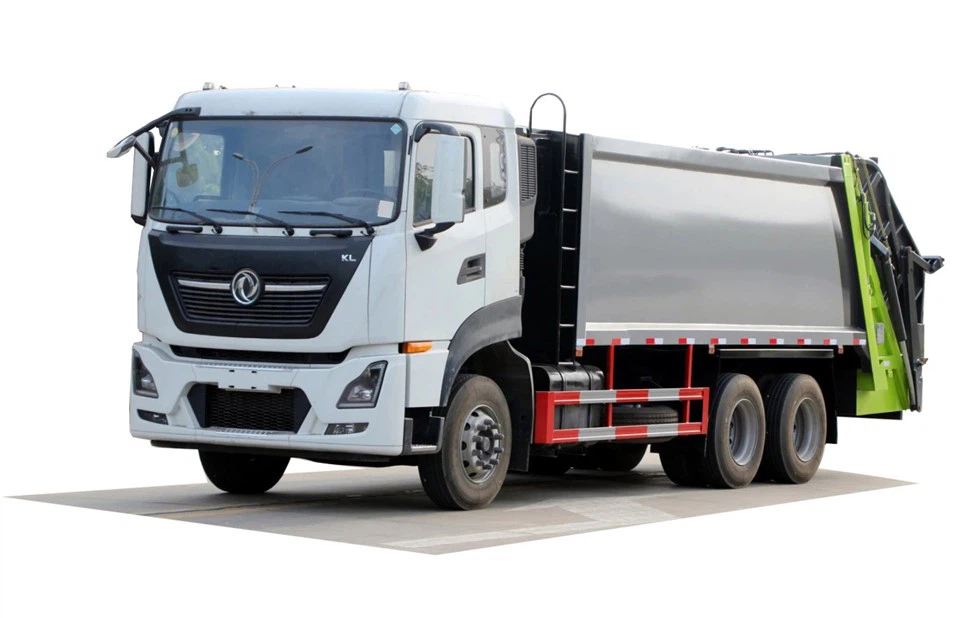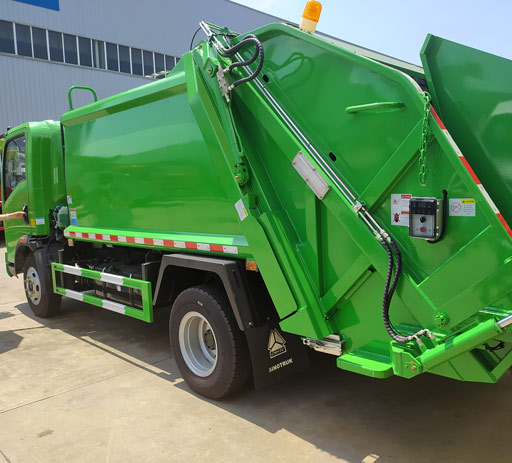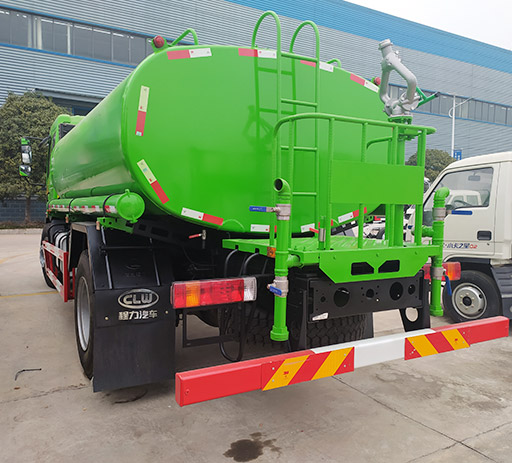Everything You Need to Know About Trucks with Front End Loaders

Trucks with front end loaders are essential vehicles in various industries, combining the abilities of trucks and loaders into one powerful piece of machinery. These versatile machines are designed to handle heavy loads, move materials, and perform a variety of tasks in construction, agriculture, and landscaping. This article will provide an in-depth exploration of trucks with front end loaders, covering everything from their components and benefits to operational tips and frequently asked questions.
Table of Contents
- What Is a Truck with Front End Loader?
- Benefits of Using Trucks with Front End Loaders
- How to Choose the Right Truck with Front End Loader
- Key Components of Trucks with Front End Loaders
- Common Uses of Trucks with Front End Loaders
- Operational Tips for Using Front End Loaders
- Maintenance of Trucks with Front End Loaders
- Costs Involved in Purchasing Trucks with Front End Loaders
- Safety Tips for Using Front End Loaders
- FAQ
What Is a Truck with Front End Loader?
A truck with a front end loader is a hybrid machine that integrates a truck chassis with a front end loader attachment. The truck serves as a mobile platform, while the front end loader is used for digging, lifting, and moving materials. This combination allows for efficient transport and material handling on job sites.

Types of Trucks with Front End Loaders
There are various types of trucks with front end loaders, including:
- Heavy-duty trucks with loaders for construction sites
- Light-duty trucks for agricultural purposes
- Specialized loaders designed for specific industries
Benefits of Using Trucks with Front End Loaders
Using trucks with front end loaders offers numerous advantages, including:
- Versatility: These trucks can transport materials and perform various tasks without needing additional machines.
- Efficiency: They reduce the time needed for loading and unloading materials, increasing productivity.
- Cost-Effectiveness: Owning a combined machine can be more economical than purchasing separate vehicles.
- Maneuverability: The compact size of these machines allows them to operate in tight spaces.
How to Choose the Right Truck with Front End Loader
Selecting the right truck with a front end loader requires careful consideration of various factors:
1. Determine Your Needs
Identify the specific tasks you need the truck for, including:
- Load capacity
- Type of materials to be moved
- Terrain and job site conditions
2. Evaluate Specifications
Consider the following specifications when choosing a truck:
- Engine power
- Transmission type
- Loader capacity
3. Research Brands and Models
Look for trusted manufacturers and compare different models based on performance, reliability, and warranty options.
Key Components of Trucks with Front End Loaders
Trucks with front end loaders consist of several key components that ensure their functionality and efficiency:
1. Chassis
The chassis provides the structural framework and support for the truck and loader attachment. It must be durable and designed to handle heavy loads.
2. Loader Arm
The loader arm is crucial for lifting and moving materials. It should be strong and capable of reaching various heights and distances.
3. Bucket
The bucket is attached to the loader arm and is used to scoop and transport materials. Different sizes and shapes are available for specific tasks.
4. Hydraulic System

Hydraulic systems control the movement of the loader arm and bucket, providing the necessary power for lifting and lowering heavy loads.
Common Uses of Trucks with Front End Loaders

Trucks with front end loaders are used in various industries, including:
1. Construction
In construction, these trucks efficiently transport materials like gravel, sand, and dirt. They can also be used for leveling and grading sites.
2. Agriculture
Farmers utilize trucks with front end loaders for feeding livestock, moving soil, or transporting crops. Their adaptability makes them vital for agricultural tasks.
3. Landscaping
In landscaping, these trucks facilitate material transport, enabling quick and easy movements of soil, mulch, and plants.
4. Waste Management
They play a crucial role in waste management by lifting and moving debris to disposal sites or compacting materials.
Operational Tips for Using Front End Loaders
To maximize productivity and safety while using trucks with front end loaders, consider the following tips:
1. Conduct Pre-Operation Checks
Inspect the vehicle before use, including hydraulic fluids, tire pressure, and overall condition.
2. Load Materials Wisely
Ensure proper loading techniques to avoid tipping or losing load balance. Distribute weight evenly.
3. Maintain Visibility
Keep a clear line of sight while operating the loader, using mirrors if necessary, to avoid accidents.
4. Follow Safety Protocols
Always wear appropriate personal protective equipment (PPE) and adhere to safety regulations on the job site.
Maintenance of Trucks with Front End Loaders
Regular maintenance is crucial to ensure the longevity and efficiency of trucks with front end loaders. Follow these maintenance practices:
1. Regular Inspections
Professionally inspect your truck and loader attachment periodically for any wear and tear.
2. Lubrication
Regularly lubricate moving parts, especially joints and hydraulic components, to reduce friction and prevent wear.
3. Fluid Checks
Monitor and change hydraulic fluids and engine oil as recommended by the manufacturer to maintain optimal performance.
4. Clean the Equipment
Regularly clean your truck and loader to remove dirt and debris that could impede functionality.
Costs Involved in Purchasing Trucks with Front End Loaders
The cost of trucks with front end loaders can vary significantly based on several factors:
1. Type of Truck
Heavy-duty models usually cost more than lighter variants due to their enhanced capabilities and durability.
2. Brand and Model
Reputable brands might have a higher price tag but offer better quality and reliability.
3. New vs. Used
Deciding to purchase a new or used truck will affect overall costs significantly. Used trucks can offer savings but may require more maintenance.
4. Financing Options
Explore financing options available through manufacturers or dealerships, as they can impact the overall cost of ownership.
Safety Tips for Using Front End Loaders
Ensuring safety while operating trucks with front end loaders is paramount. Adhere to the following safety tips:
1. Training
Ensure operators are properly trained in using the equipment and understand its functions.
2. Use Safety Devices
Always utilize safety devices such as seatbelts, lights, and alarms to enhance visibility and safety.
3. Awareness of Surroundings
Maintain awareness of your surroundings to avoid accidents, particularly in congested job sites.
4. Follow Load Limits
Do not exceed the manufacturer’s recommended load limits to prevent accidents and equipment damage.
FAQ
1. What is the average operating speed of a truck with a front end loader?
The average operating speed can vary, but most trucks with front end loaders operate between 10-25 mph depending on the terrain and load.
2. How do I know if my truck with a front end loader needs maintenance?
Look for warning signs like unusual noises, leaks, or difficulty operating the loader. Regular inspections are essential.
3. Can trucks with front end loaders be used in rough terrains?
Yes, many trucks with front end loaders are designed to operate in rough terrains. However, always check the truck’s specifications for suitability.
4. What should I do if the loader stops working suddenly?
If the loader stops working, safely park the truck and perform a visual inspection. If issues persist, consult a mechanic or technician.
5. Are there rental options available for trucks with front end loaders?
Yes, many equipment rental companies offer trucks with front end loaders for short- or long-term rentals based on project needs.
6. How can I improve the fuel efficiency of my truck with a front end loader?
Regular maintenance, proper loading, and maintaining an optimal speed can help improve fuel efficiency.
